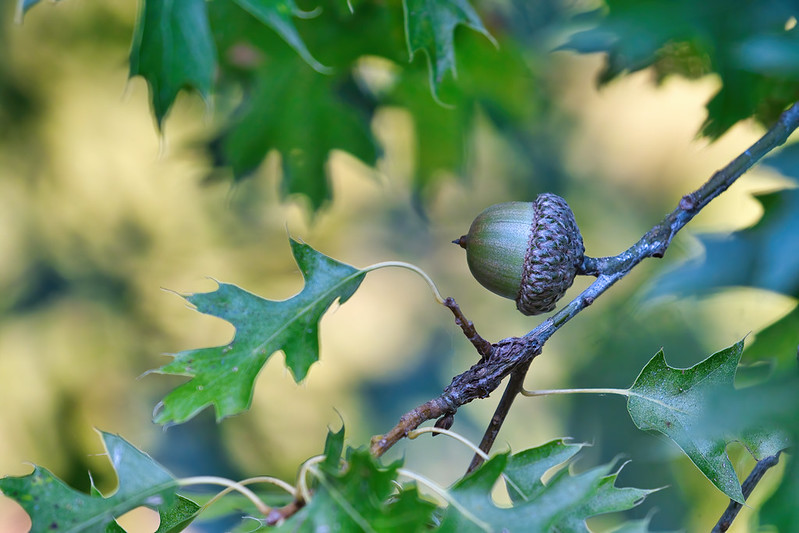There is an Oak Tree that is full of acorns near the Phillip Parks Memorial Fishing Pier at Reeves Slough (Sequoyah National Wildlife Refuge – Oklahoma). Lots of animals depend on acorns for food.

Acorns are one of the most important food sources for a variety of wildlife species, including deer, squirrels, and birds. These small nuts are packed with energy, protein, and essential vitamins and minerals, providing essential sustenance for animals during the winter months when other food sources are scarce.
Deer are perhaps the most well-known consumers of acorns. They use their sharp hooves and strong jaws to crack open the tough shells and extract the rich, nutritious kernels inside. In some areas, acorns can make up a significant portion of a deer’s diet, and the availability of acorns has been shown to impact their populations and health.
Squirrels are another major consumer of acorns, and they play a critical role in dispersing the nuts and promoting the growth of new oak trees. Squirrels are excellent at storing acorns, burying them in the ground and marking the location so they can return later to retrieve them. This behavior not only ensures the squirrels have a reliable source of food throughout the winter, but it also helps to germinate new oak trees and promote forest regeneration.
Birds also rely on acorns as a source of food, and many species, such as blue jays, woodpeckers, and nuthatches, are particularly adept at cracking open the tough shells to extract the kernels. In addition to eating the nuts themselves, birds also play a crucial role in dispersing the acorns and promoting the growth of new oak trees.
In conclusion, acorns are a vital food source for wildlife, providing essential sustenance for animals during the winter months and playing a critical role in the health and survival of various species. Whether you’re a nature lover or simply enjoy observing wildlife in your backyard, take a moment to appreciate the role that acorns play in the ecosystem, and the important role they play in supporting the health and wellbeing of the wildlife that depends on them.
Gear Used:
- Camera: Fujifilm X-T3
- Lens: Canon EF 100-400 mm f/4.5-5.6 L IS II USM (attached with a Fringer EF-FX Pro)
Technical:
This acorn was hanging over the sidewalk that leads to the Phillip Parks Memorial Fishing Pier. I photographed the acorn while hand-holding my camera and lens.
- Location: Sequoyah National Wildlife Refuge (Oklahoma)
- Date and Time Taken: August 25, 2020 (08:10:58 A.M.)
- Aperture: f5.6
- Shutter speed: 1/450 sec. (as determined by the camera)
- ISO: 1600
- Exposure Compensation: +0.33
- Focal Length: 400 mm
